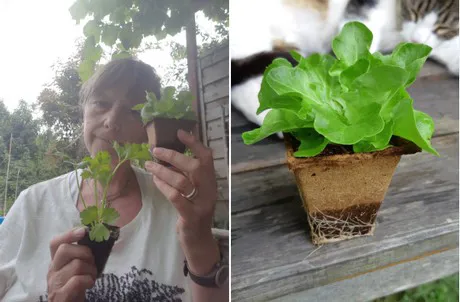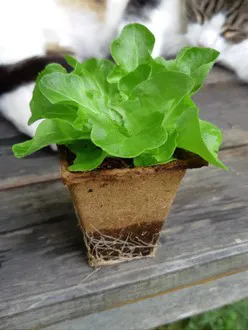Fertil has been proposing its Fertipot in horticulture for nearly 70 years, but the company now targets arboriculture and market gardening with a range of products specifically adapted to the needs of these sectors.
“Fertilpot has always been mostly made of wood fibers. But for 5-6 years, we have invested a lot in research and innovation to remove the peat from the product components. This way, Fertilpot is designed with 100% wood fibers and entirely natural,” explains Sigrid Hansen, Export-Manager Europe at Fertil.

“Our supply is 100% local”
The company, located in the Vosges, is supplied exclusively with raw materials from this forest region. “We purchase wood from thinning that is worked here, processed into a paste and molded to form the pots that will accommodate plants and seedlings or cuttings.”
Fertil offers a wide range of different pot sizes, from the 5x5 for market gardening to the 3L pot for arboriculture. It is ideal for use in organic production.
An agronomic interest
 Fertilpot presents great agronomic benefits as it is both water- and air-permeable. For off-ground cultivation, there is an aerial delimitation phenomenon which makes the roots stop at the edge of the pot instead of turning around inside. This allows the rootlets, small branches of capillary roots to develop. We then obtain much more hair than with a plastic pot. Therefore, the plant is much more robust and much better prepared to be planted in the ground. This is particularly interesting for species with a fragile root system,” explains Sigrid.
Fertilpot presents great agronomic benefits as it is both water- and air-permeable. For off-ground cultivation, there is an aerial delimitation phenomenon which makes the roots stop at the edge of the pot instead of turning around inside. This allows the rootlets, small branches of capillary roots to develop. We then obtain much more hair than with a plastic pot. Therefore, the plant is much more robust and much better prepared to be planted in the ground. This is particularly interesting for species with a fragile root system,” explains Sigrid.
5X5 Fertilpot salad plants in Switzerland
Towards zero-plastic
Another non-negligible advantage of Fertilpot is that it is very easy to use. Indeed, it is not necessary to remove the pot before planting. Once in the ground, the roots feel the humidity from the soil and go through the Fertilpot that will degrade naturally. “Although it varies depending on the species and the conditions of cultivation, the plant keeps for a year in the Fertilpot before it is planted and decomposes into humus in the ground,” explains Sigrid.
“Additionally, we eliminate much of the plastic waste in the orchards. Being 100% biodegradable and plantable, Fertilpot does not generate any plastic waste. For the past 2 years, we have really been feeling a change in the production habits. In nurseries, Fertilpot has already been widely used for 15 years for young plants in Italy. The demand is evolving towards restricting the use of plastic and promoting the use of reusable trays, as it is done in the market gardening sector for the cultivation of young plants in Austria and Switzerland.”
According to Sigrid, “It makes sense to use Fertilpot for any tree or vegetable plant that will be planted directly in the ground!”
Francis Paon and Sigrid Hansen-Catania at Fruit Attraction 2019
For more information:
Sigrid Hansen-Catania
Fertilpot
Phone: +33 6 71 70 71 61
[email protected]
https://www.fertil.fr/
https://www.fertil.fr/pots-biodegradables/
